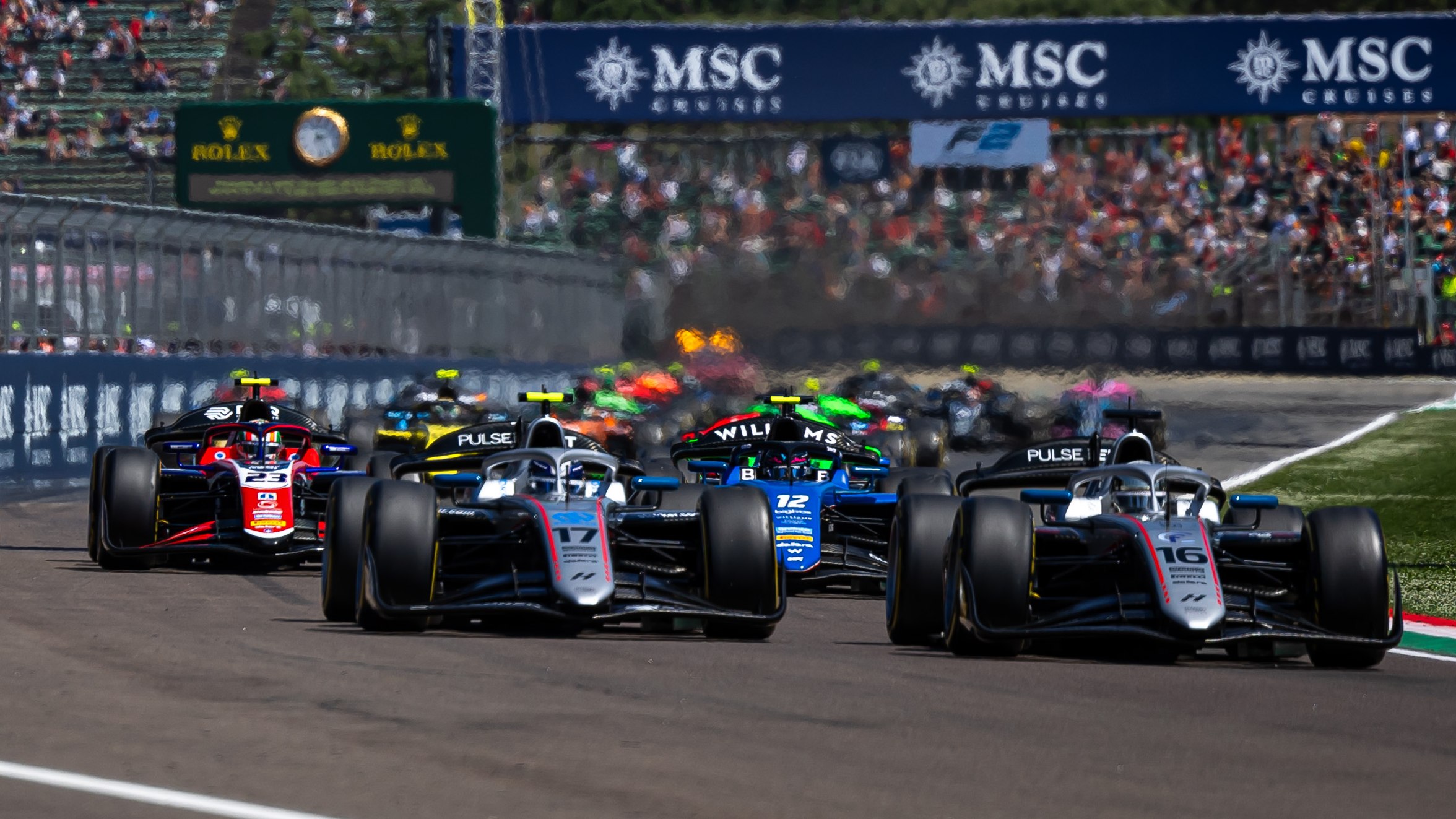Car
Formula 2 2024 season: How qualifying, set-up and strategy defined the Monaco Grand Prix
by Josh Suttill
7min read
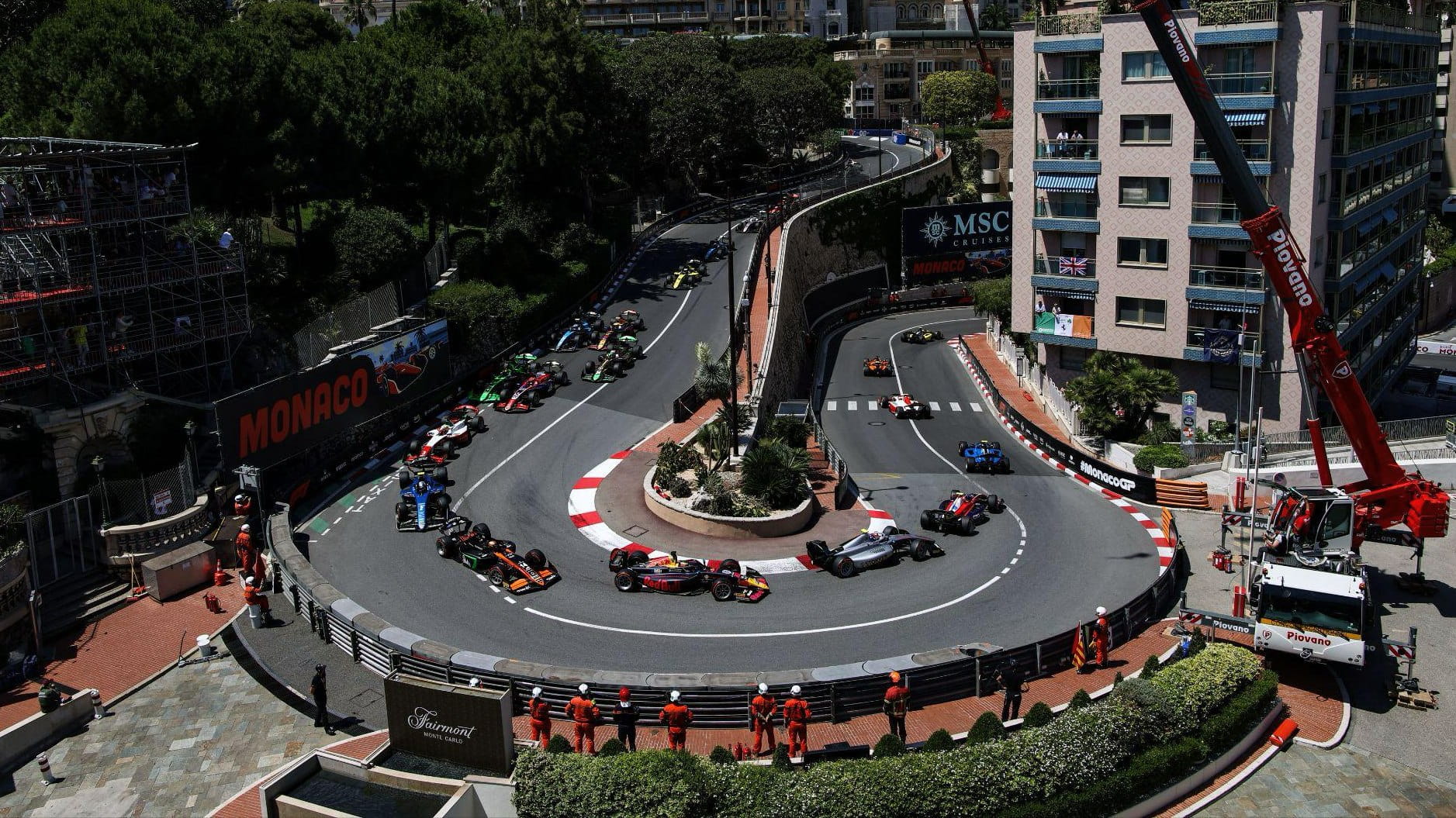
RaceTeq delivers in-depth Formula 2 technology reports from every round of the 2024 championship. In Monaco, F2 drivers are presented with a challenge like no other.
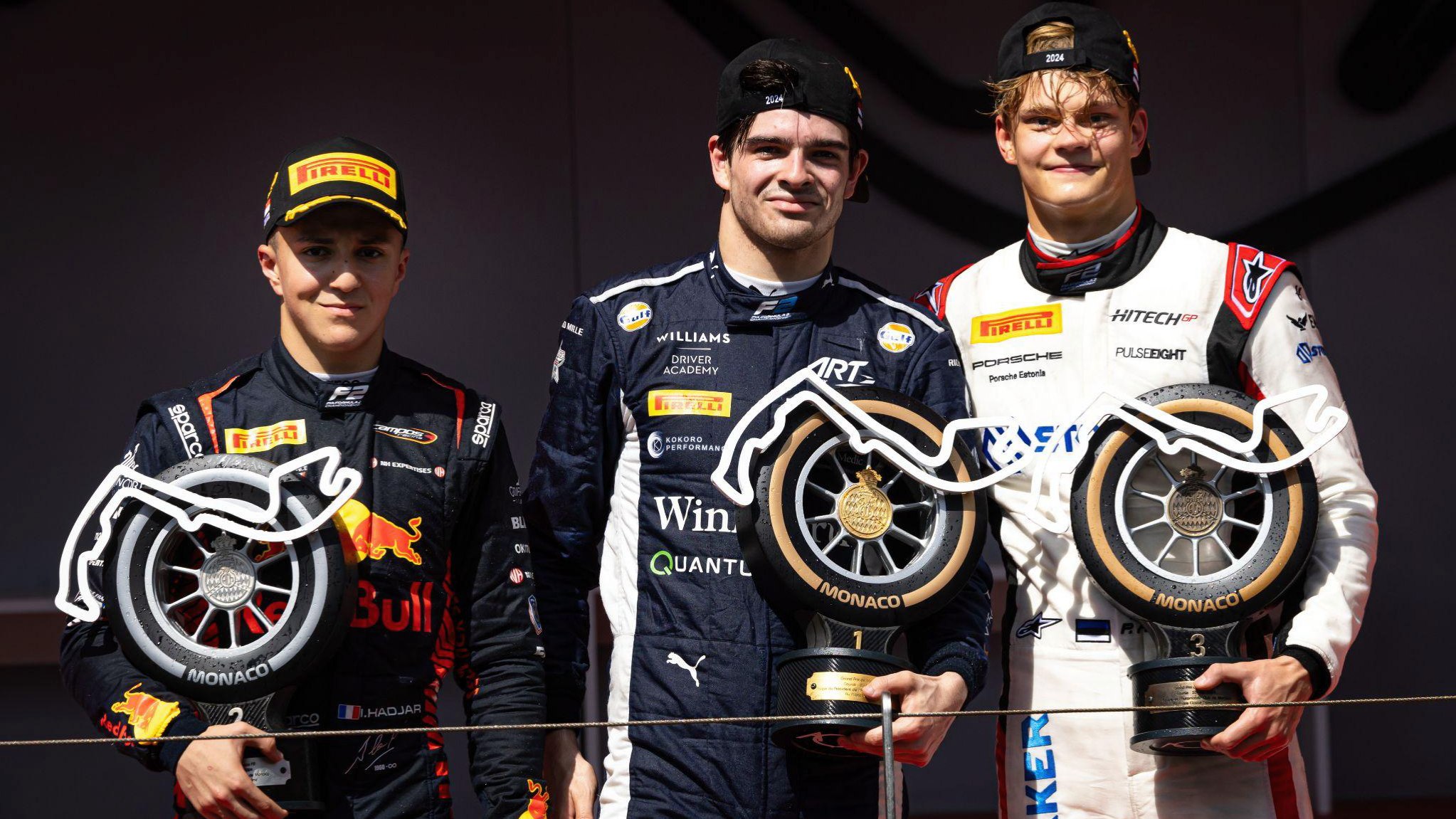
Zak O’Sullivan (centre) won the Monaco F2 feature race ahead of Isack Hadjar (left) and Paul Aron (right)
The 2024 edition was no exception with ART Grand Prix’s Zak O'Sullivan playing the Monaco gamble to perfection, leaving his mandatory pitstop in the feature race until there were just two laps to go. That proved fortuitously to be the perfect time as a Virtual Safety Car (VSC) was deployed after Rodin Motorsport’s Zane Maloney and AIX Racing’s Joshua Duerksen collided as the latter exited the pitlane.
The VSC came out five seconds after O’Sullivan entered the pits, and, as entering the pitlane under VSC is banned in F2, it couldn’t have worked out better for O’Sullivan as he effectively had a ‘cheap’ pitstop that cost him far less time than a pitstop under the green flag as the rest of the field had to slow down to a delta pace rather than continue at race pace.
The lucky pitstop completed O’Sullivan’s charge from 15th on the grid to a maiden F2 race win but his win was rooted in a clever strategy from O’Sullivan and ART Grand Prix. In this report, we look at how strategy shaped the Monaco result, how teams wrestled with the set-up in the Principality, and how qualifying differs at Monaco compared to other venues.
The VSC came out five seconds after O’Sullivan entered the pits, and, as entering the pitlane under VSC is banned in F2, it couldn’t have worked out better for O’Sullivan as he effectively had a ‘cheap’ pitstop that cost him far less time than a pitstop under the green flag as the rest of the field had to slow down to a delta pace rather than continue at race pace.
The lucky pitstop completed O’Sullivan’s charge from 15th on the grid to a maiden F2 race win but his win was rooted in a clever strategy from O’Sullivan and ART Grand Prix. In this report, we look at how strategy shaped the Monaco result, how teams wrestled with the set-up in the Principality, and how qualifying differs at Monaco compared to other venues.
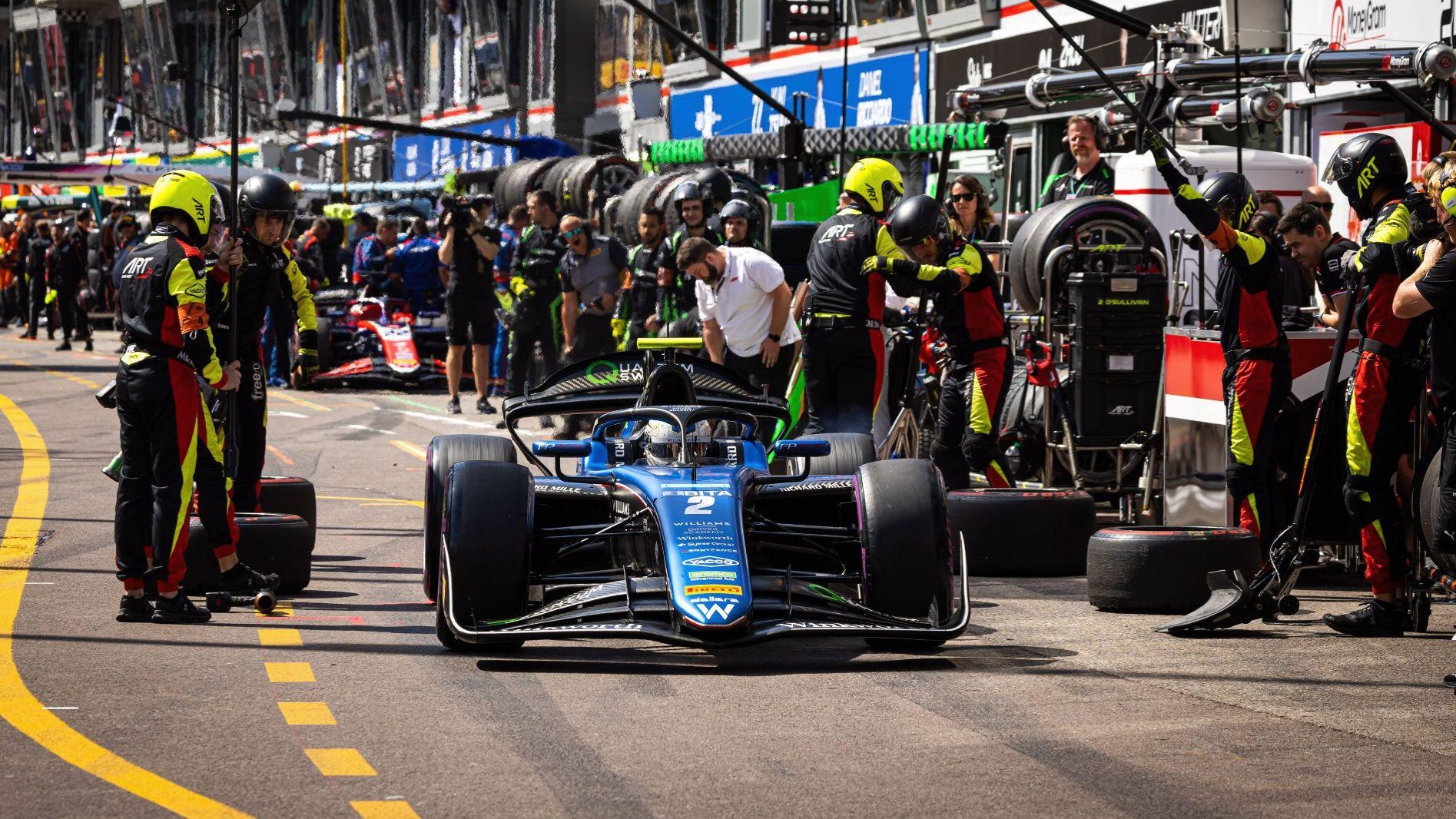
O’Sullivan pits during the 2024 Monaco F2 feature race. This pitstop would prove to be crucial
The power of the overcut
A difficult qualifying had left O’Sullivan well down the order and, with overtaking difficult in Monaco, ART Grand Prix knew it had to try something different. So, it put him on the alternative strategy: starting on the harder (slower but more durable) soft tyre while others were on the softer (faster but less durable) supersoft.
That inevitably meant some early laps stuck behind other cars, but then it was time for faster ‘qualifying’ laps until the end.
“[There was] no real laptime target as the problem for us is the conditions change so much each day, the track is always evolving, and temperature and fuel loads can be different,” feature race winner O’Sullivan explained after the race.
“But honestly, I managed quite a lot early in the race, I was just stuck in a train of cars. There was no point in me pushing it was only when [Taylor] Barnard [AIX Racing driver] pitted in front of me that I had clean air.
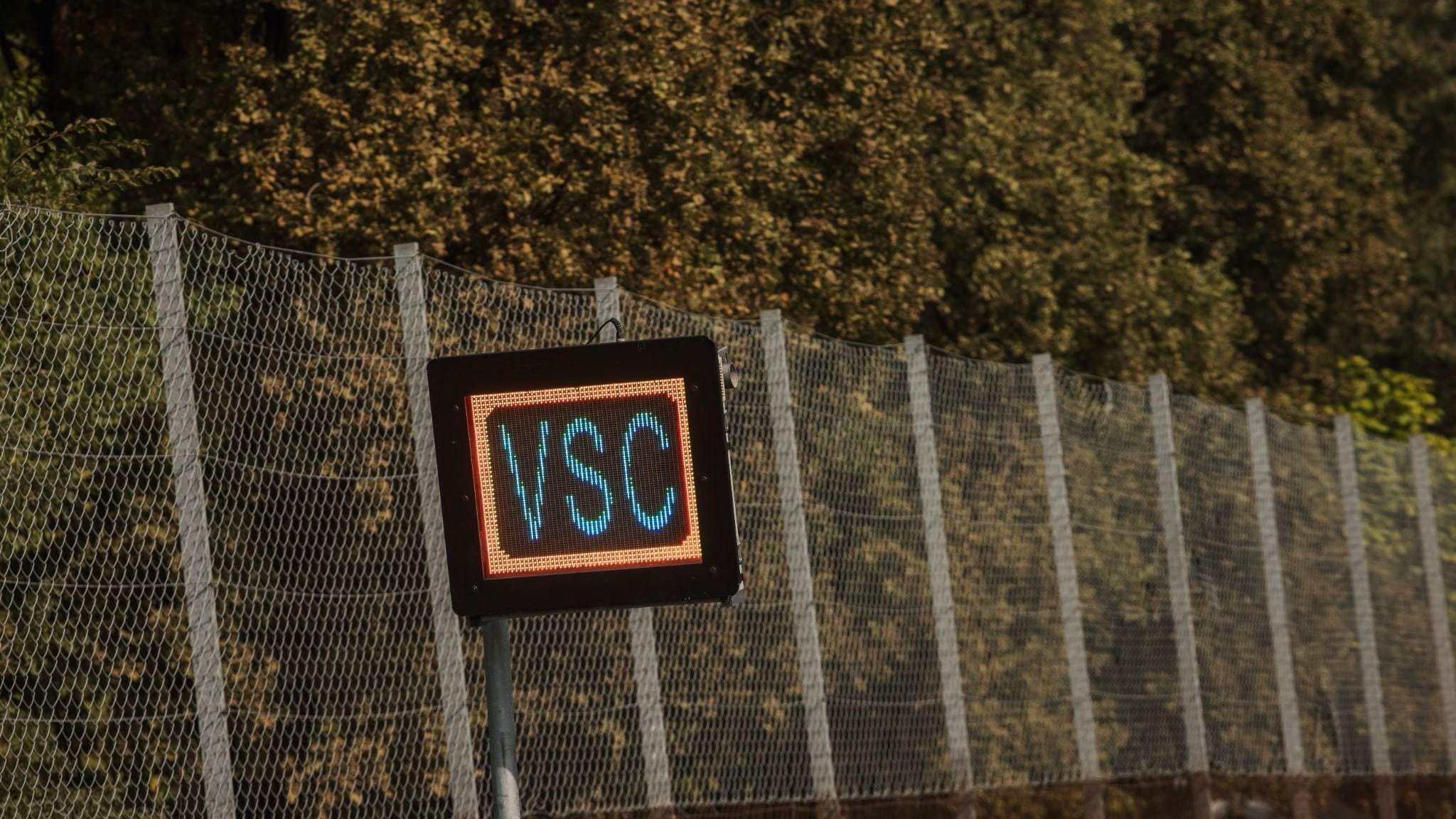
The VSC slows the field down to a delta time that each driver must match. Pitting during this period can be highly beneficial
“And in the end, it was 20 qualifying laps to try and make up some advantage. I was touching quite a few walls and at some point, I knew I was maybe in the top six or seven [once he pitted] before the VSC that gifted us the win.”
As soon as the team saw the Maloney/Duerksen incident, it called O’Sullivan into the pits and, with only a few seconds to spare, he came into the pitlane before the VSC was called. Doing so five seconds later would have been illegal and left O’Sullivan point-less.
It highlights one of the unique challenges of Monaco – the power of the overcut.
Often the undercut is the way to go in F2, with Driver A jumping Driver B by pitting one or two laps before and using their fresh tyres to put in some fast laps and emerge ahead when Driver B comes out of the pits.
In Monaco, track position is so important that it complicates the dilemma. O’Sullivan himself was boxed in between cars early in the race. When he was released from the pits, his “20 qualifying laps” meant he was often faster than those who had pitted – because they were now stuck in traffic.
And it was that strategic decision – just as much as the fortunate VSC timing – that meant O’Sullivan walked away with victory.
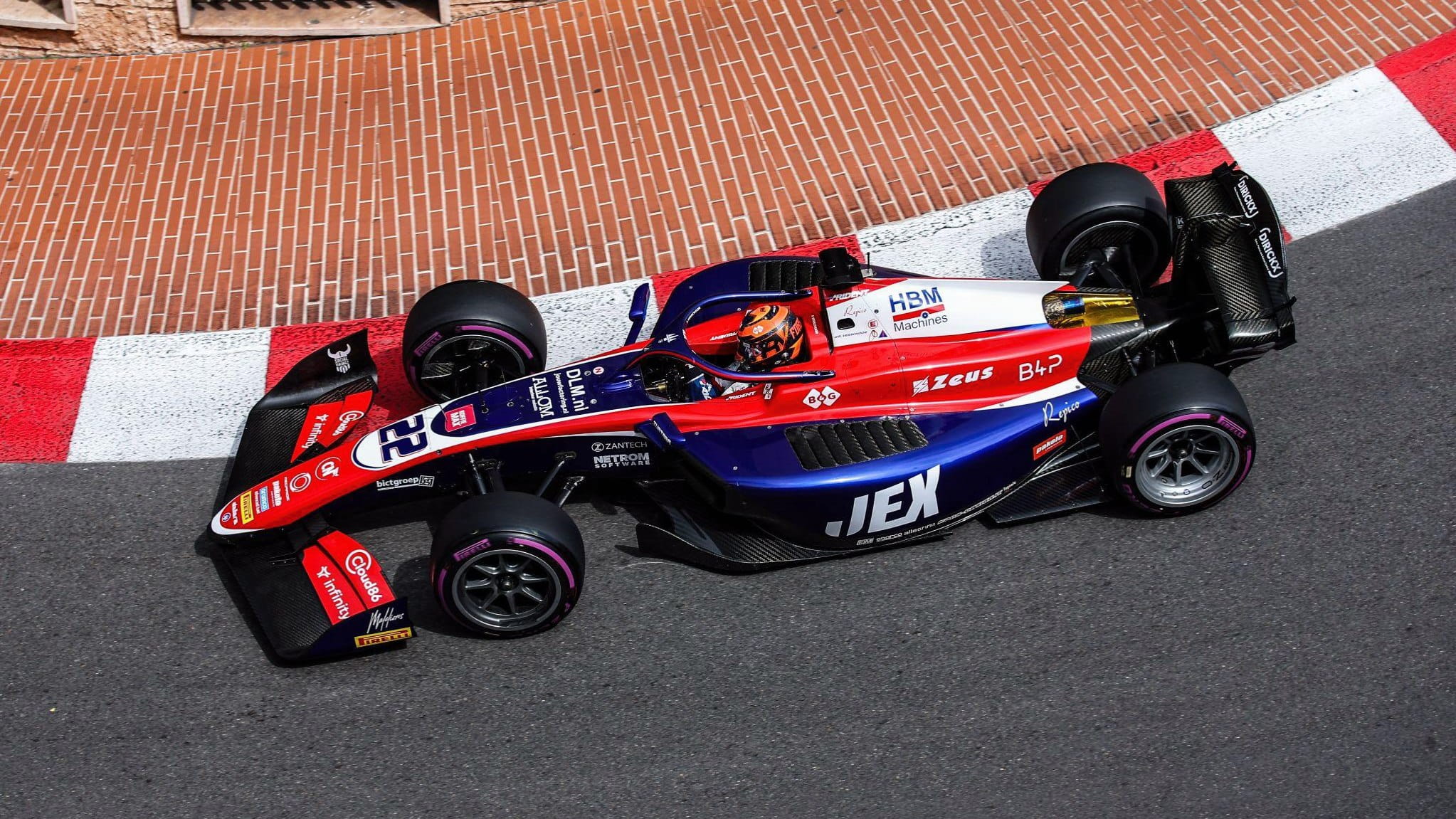
Richard Verschoor took pole position for the feature race in Monaco
F2’s most unique qualifying session
Qualifying for Monaco in F2 is a one-of-a-kind session. Not only are the drivers within millimetres of the walls at nearly every turn, but there’s a different format to contend with.
The 22 drivers are split into two equal groups of 11, with each group having 15 minutes of track time (half the typical 30-minute F2 qualifying). The group with the faster pacesetter takes the odd-numbered positions on the feature race grid.
It leads to an unusual scenario where the fastest driver in Group A – in this case Trident’s Richard Verschoor – has to watch the second session to see if any of the 11 drivers in Group B can beat his benchmark time.
“Especially when you see them all going purple [setting fastest sectors], it’s quite exciting for me!” Verschoor said when asked how it was watching his rivals try to beat him from his team’s pitwall.
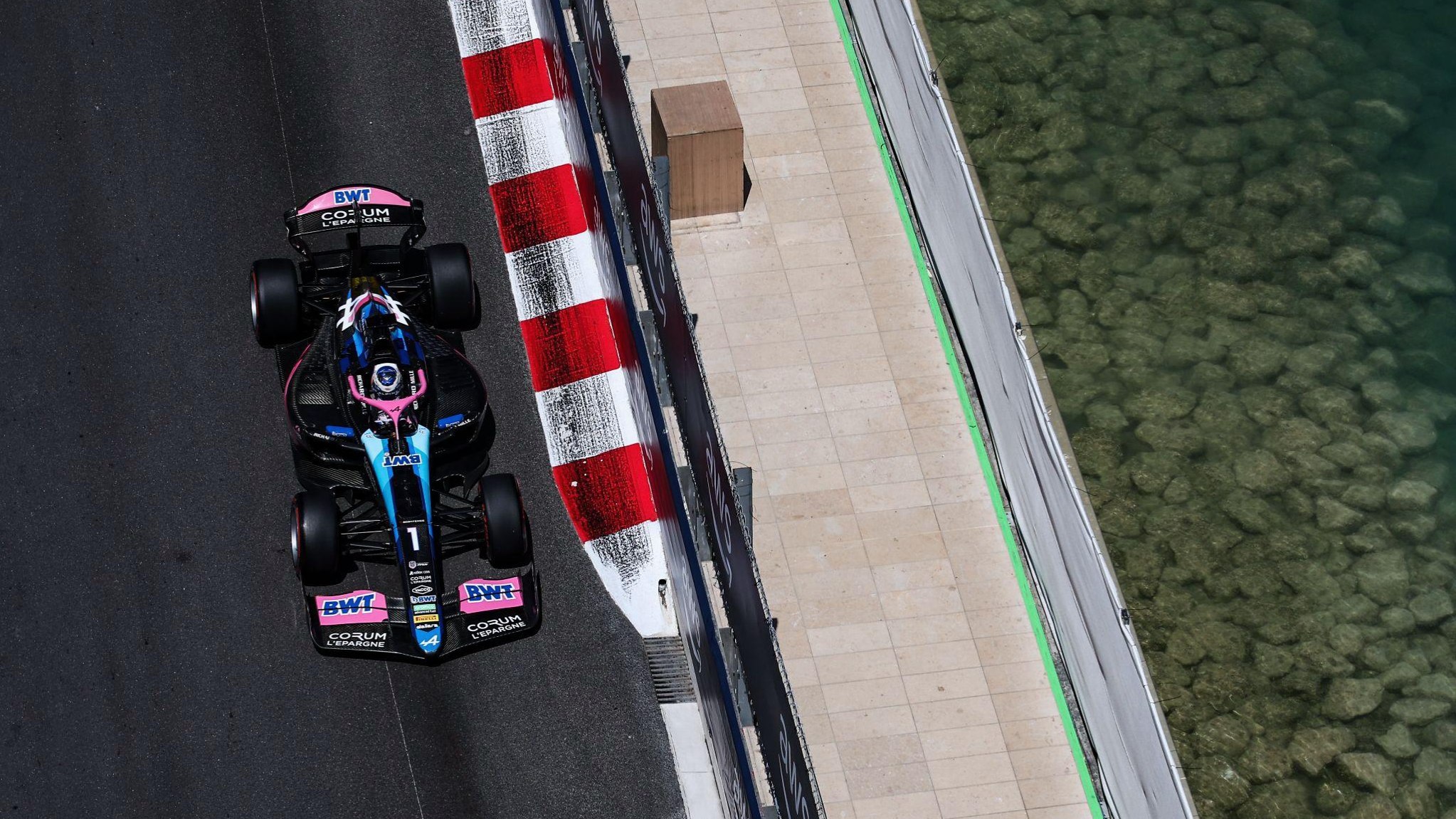
Victor Martins qualified second but fell to ninth in the feature race thanks to a slow start
“At that point, once you’ve done your lap. You can only hope it was good enough. I thought Group B was going to be quicker but it was close in the end.”
On the other side of the battle, ART Grand Prix’s Victor Martins had to watch Verschoor and the rest set their laps and then go out and beat them.
“On my side, I was in the second group and I don’t like it because you kind of watch them, see what they do,” Martins said.
“It’s giving pressure because they’re already done and you still need to do it and to put the laps in with no mistake. If you take it well [on the positive side], you just get information for you and then you use it at the track.
“But it can also put pressure on yourself so if I had to choose, I would prefer the first group just because you focus on yourself, do your job and lap after lap you improve without having some things that are coming into your head.
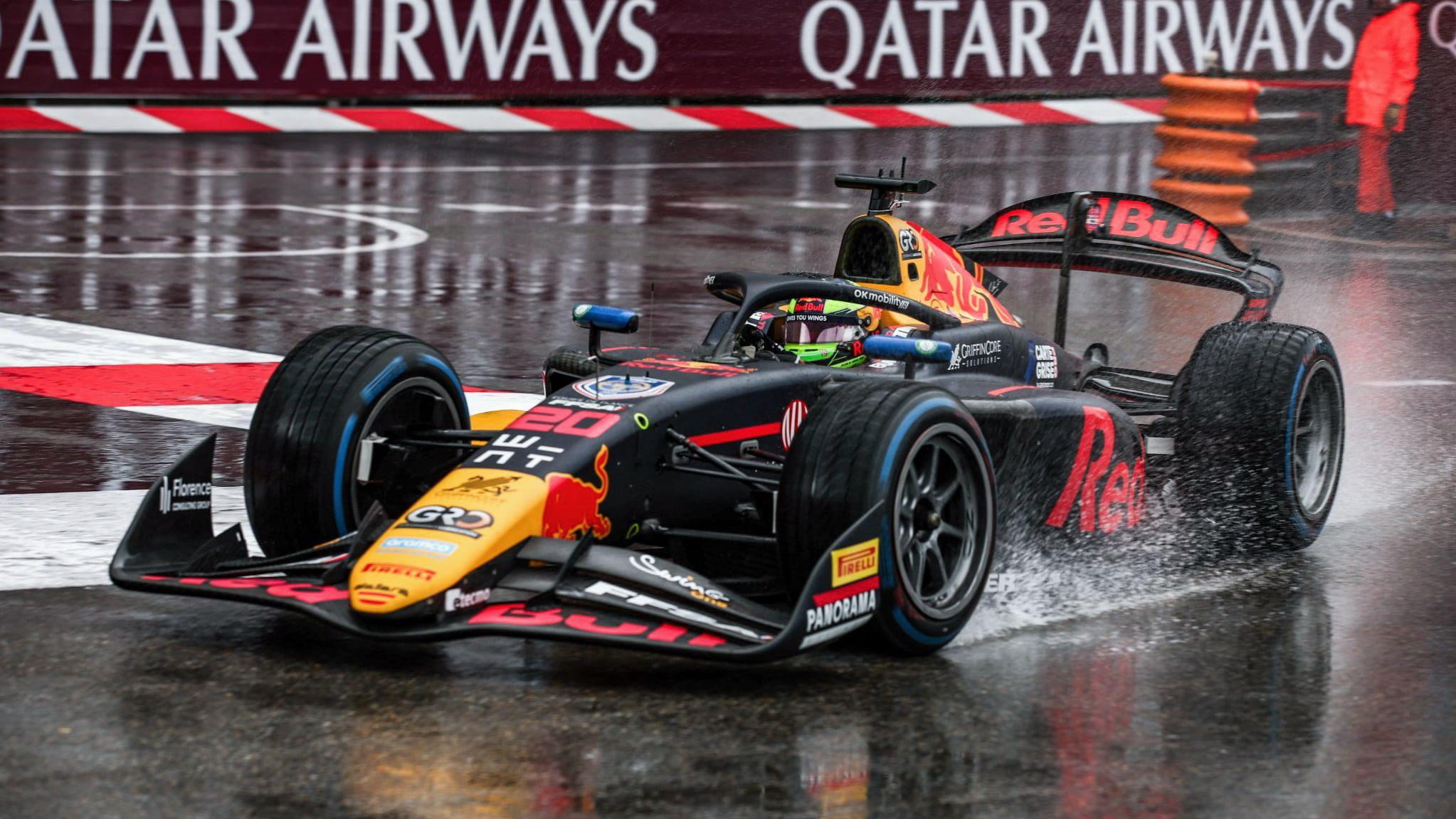
A wet practice session meant teams’ data was limited, particularly as the following F2 sessions were conducted in dry weather
A huge set-up challenge in Monaco
What complicated qualifying even further was that the sole free practice session on Thursday was hit by rain, meaning drivers couldn’t prepare for qualifying in dry conditions.
“The main difference this year was we had a wet practice,” Verschoor said.
“It was super difficult for all the drivers to get up to the limit [in qualifying]. We wanted to be on the limit from lap one, but you also don’t want to crash. So, it’s give and take.”
So how do F2 teams set up the car with zero dry running before qualifying?
“For all the teams it’s based on simulations; the team [also] have experience from previous years,” Verschoor explained.
“Now we have a bit of a different car [in F2 in 2024] so the philosophy might be different.
“But in the end, all the teams have quite good engineers to work on the car. Like today they don’t have much information from practice so the car wasn’t perfect but it was in the window.”
For Martins, the best strategy was to approach qualifying like practice. You don’t have any on-track data before practice, but as a team, you implement the best set-up possible based on simulations and knowledge from previous years.
“The way to work and approach qualifying is not different to practice because otherwise you’re not prepared for it,” Martins said.
It’s not like you don’t feel confident that you’ll be quick in practice [when you have no on-track data], in the end, it’s the same.
“It’s believing on the driver’s side, the car will be quick if you have a good one. On the team’s side, it’s preparation before the session with last year’s information also.”
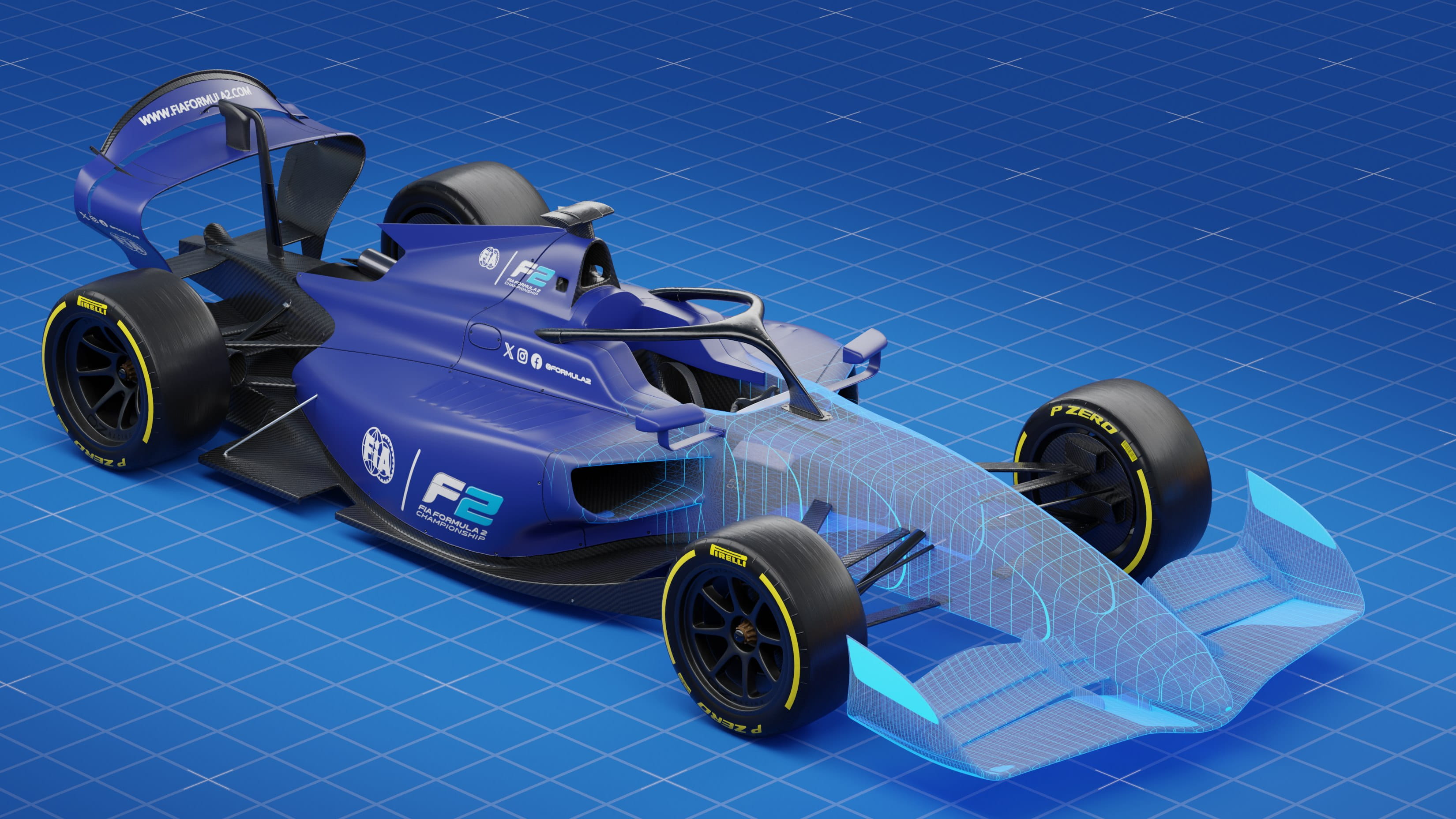
.jpg?cx=0.5&cy=0.5)
.jpg?cx=0.5&cy=0.5)
